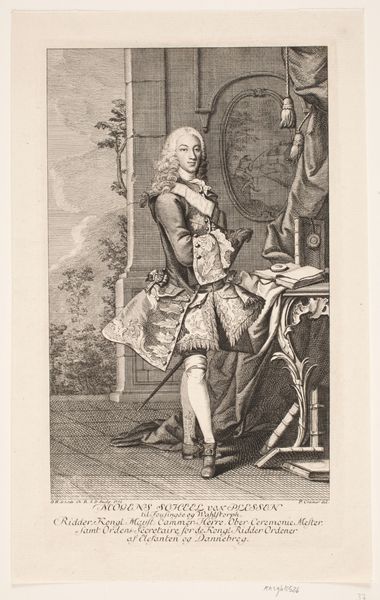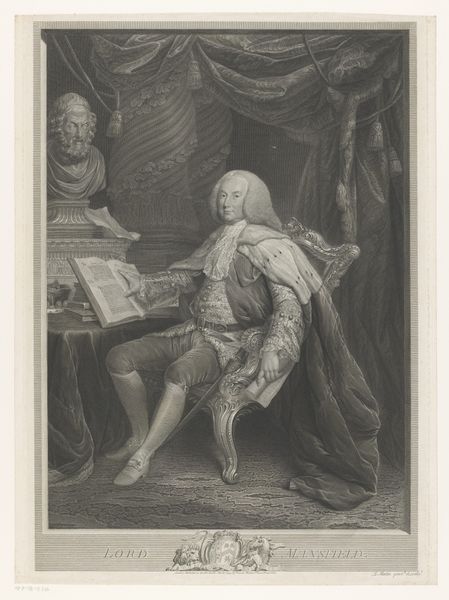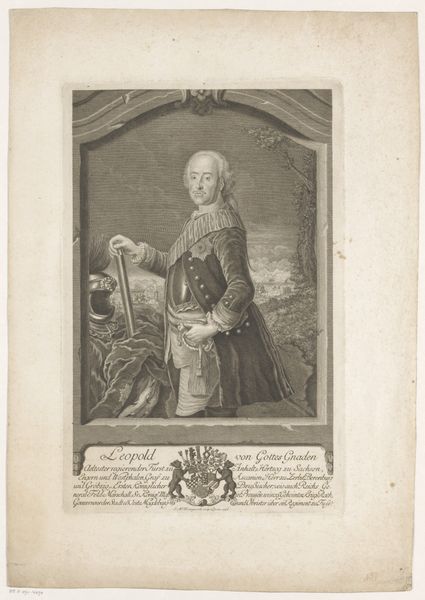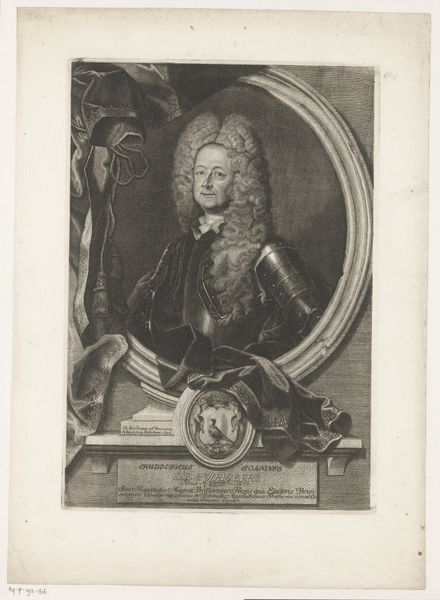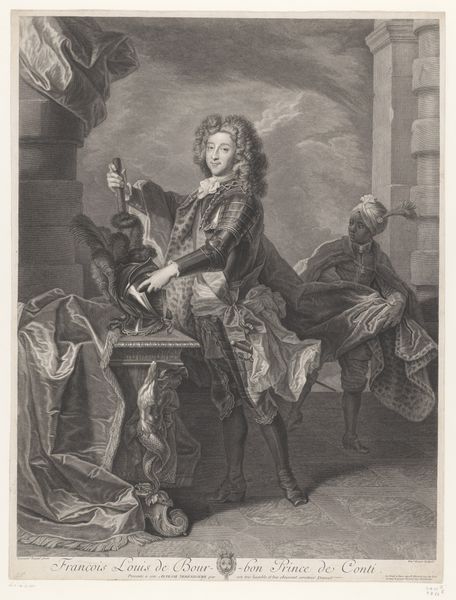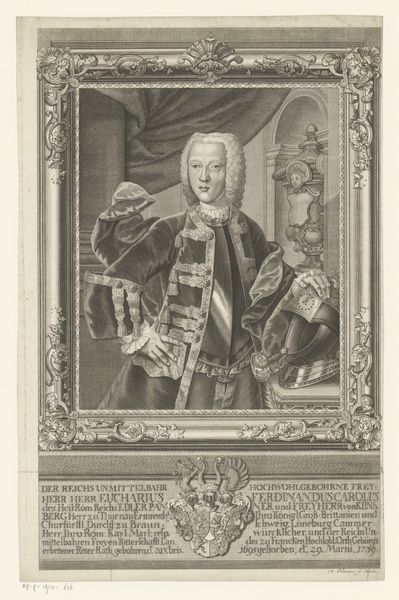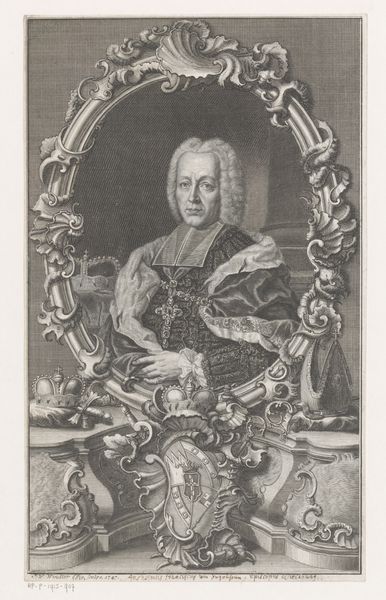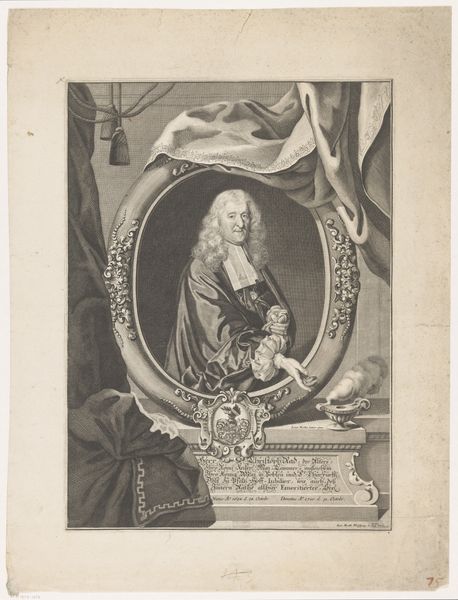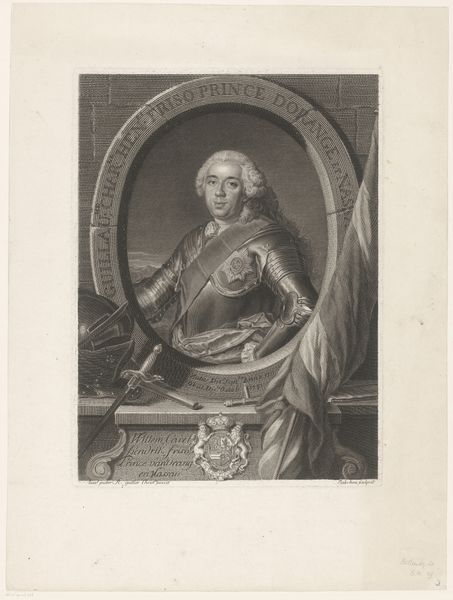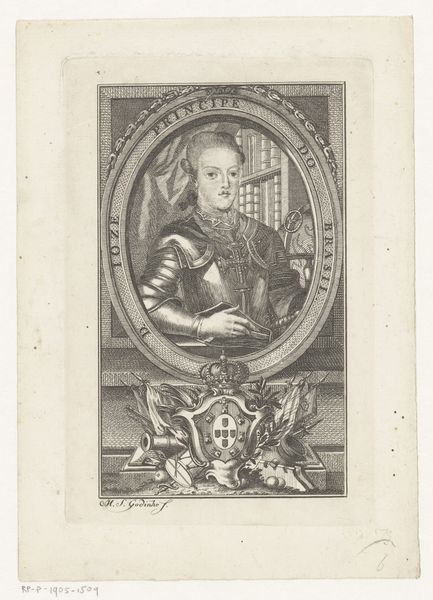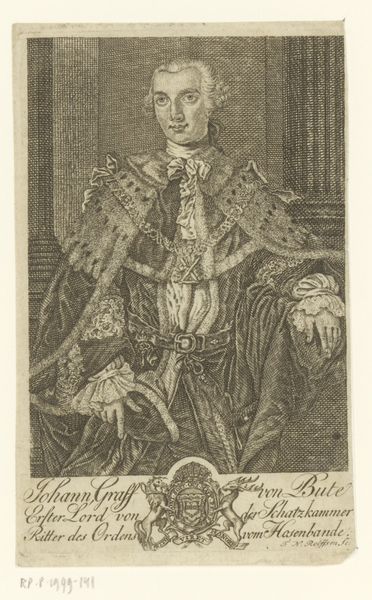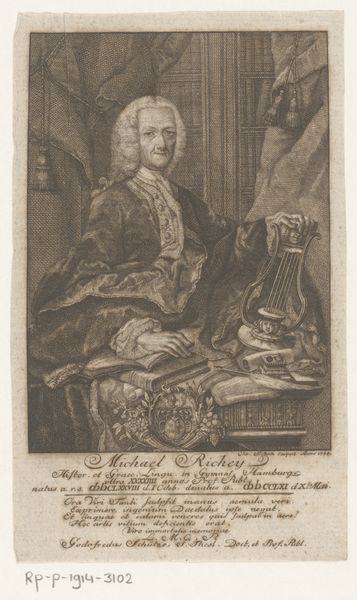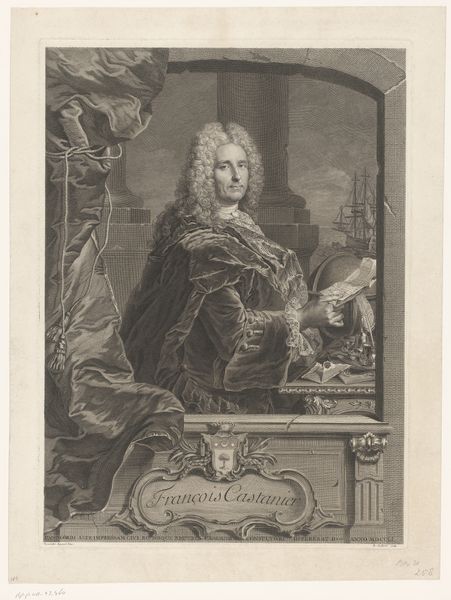
etching, engraving
#
portrait
#
baroque
#
etching
#
old engraving style
#
history-painting
#
engraving
Dimensions: height 483 mm, width 325 mm
Copyright: Rijks Museum: Open Domain
Curator: Welcome to this captivating Baroque etching, "Portret van Gustav Georg König von Königsthal," created in 1759 by Jakob Matthias Schmutzer. Editor: There's such precision to it, you know? The density of the line work constructing not just an image of a man but a carefully composed portrait exuding status. It feels like looking into a well-furnished room through a dusty window. Curator: Indeed. Consider how portraiture was instrumental for individuals like König to circulate images of themselves to demonstrate position. Here, we see visual signifiers of power meticulously rendered, like the luxurious fabrics, the laden bookshelf, the statuary hinting to education and tradition... all strategically deployed to construct the subject's persona. Editor: Absolutely. And I'm drawn to the texture conveyed, the way the ink must have been pressed into the paper. Each deliberate stroke helps establish both material wealth and the sitter's engagement with the instruments of bureaucratic labour: paper, quill, inkwell... These items speak to his engagement with trade and written transactions. Curator: It's also fascinating to examine who was granted access to such portraits. Consider how class structures influenced access to education, and the ability to commission artworks of this type in 18th-century Europe. A work like this would be actively shaping societal perceptions and reinforcing these power dynamics. Editor: Precisely. And speaking of societal structures, let’s not ignore the physical labour that produced this print. The etcher meticulously translating status into the means for its mass-distribution. Curator: That's an essential point to underscore. Thinking critically about materiality here allows us to see these artifacts not simply as artworks, but rather as active agents that perpetuated ideologies. Editor: Exactly. This etching brings into relief how the hand of the artist served to solidify power in ink on paper. It reminds us to remain attentive to who crafts history. Curator: Thinking through the historical context really reframes the way we understand representation here. Editor: Agreed. By bringing awareness to its modes of creation and what its value actually constitutes.
Comments
No comments
Be the first to comment and join the conversation on the ultimate creative platform.
